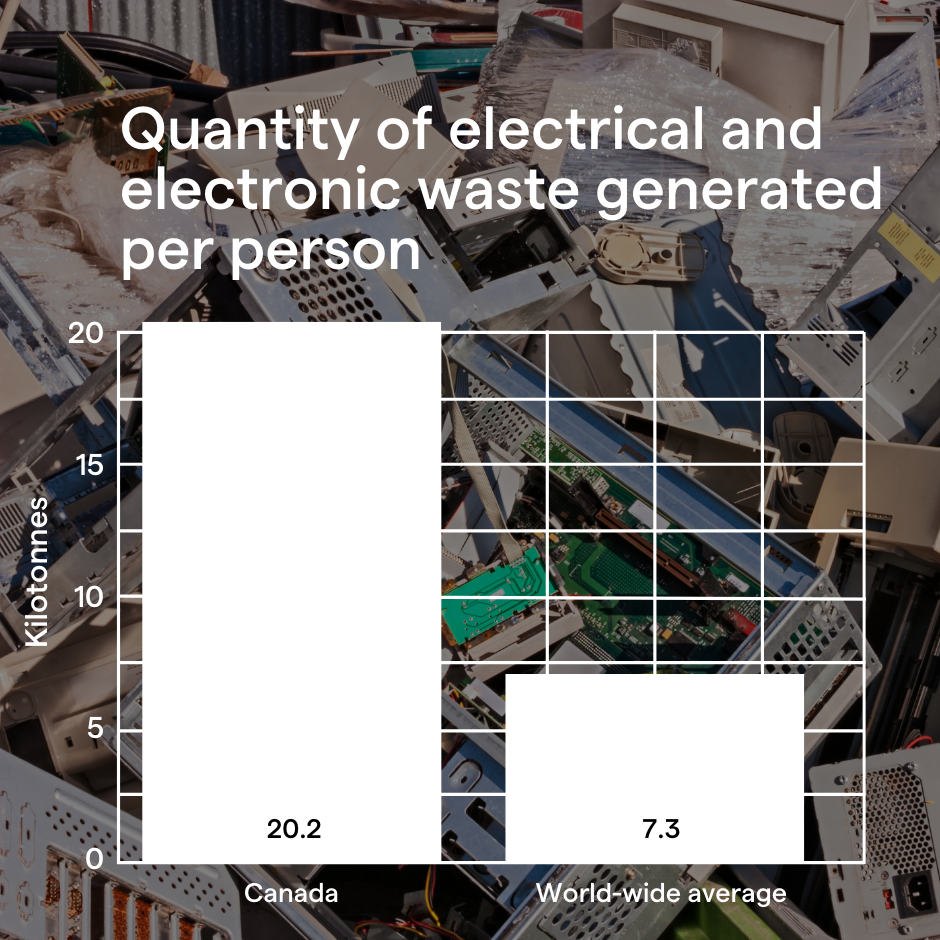Published on
Table of contents
Unbridled consumption
The alarm goes off; a new day begins. The coffee machine turns on and the oven or toaster prepares our breakfast. On the way to the office, we listen to our favourite music on our smart phone.
Our lives are organized around electronic devices and household appliances that we continue to consume in unbridled manner, because of the cruel law of obsolescence: by the time we buy something, it's almost already obsolete.
What do we do, then, with our coffee maker, our outdated computer or that cell phone that still works but doesn't have any of the cool new features? They go in the garbage, out to the curb and in the process create a serious environmental problem.
A threat to the environment, to the economy and to our health
There are toxic substances in electrical and electronic waste that threaten the health of individuals living near or working at disposal sites. For example, a 2019 study found the nickel, lead and beryllium contained in our smartphones to be carcinogenic. E-waste accounts for 70% of all the hazardous waste that ends up in disposal sites worldwide.

The electrical and electronic waste headache is also something of an economic absurdity. These devices contain valuable resources such as ferrous metals, aluminum and copper, which are up to 10 times more expensive to extract than to recycle. In addition, the United Nations Environment Programme points out that many of the specialty metals needed to develop clean technologies are being depleted because they are not being recycled. Despite this, only 3% of laptops and tablets, and 9% of phones are being recycled in Quebec.
🌎 Did you know?
By 2030, the amount of electrical and electronic waste being generated is estimated to exceed 74 Mt. Its worldwide volume is increasing by an alarming rate of nearly 2 Mt per year.
What can we do about all this?
As consumers, there are concrete steps that we can take to limit the volume of electrical and electronic waste:
Planning our purchases
Learn about sustainable and repairable products before making a purchase. Buy appliances from stores that offer recycling programs and that take back old appliances.
Changing our consumption habits
Adapt your consumer habits to always try to repair your appliances instead of replacing them. Buy used goods where possible.
Ensure an environmentally safe disposal
Donate old appliances that are still in working order to friends or family or to charities. Encourage your elected officials to create partnerships with companies that recycle electronic waste and old appliances.
Take your old electronics and appliances to a recycling centre instead of leaving them on the curb or putting them in the garbage. Some companies have realized the value of recycling electronic waste and even offer to buy your old appliances, such as Insertech Angus, a social reintegration organization.

